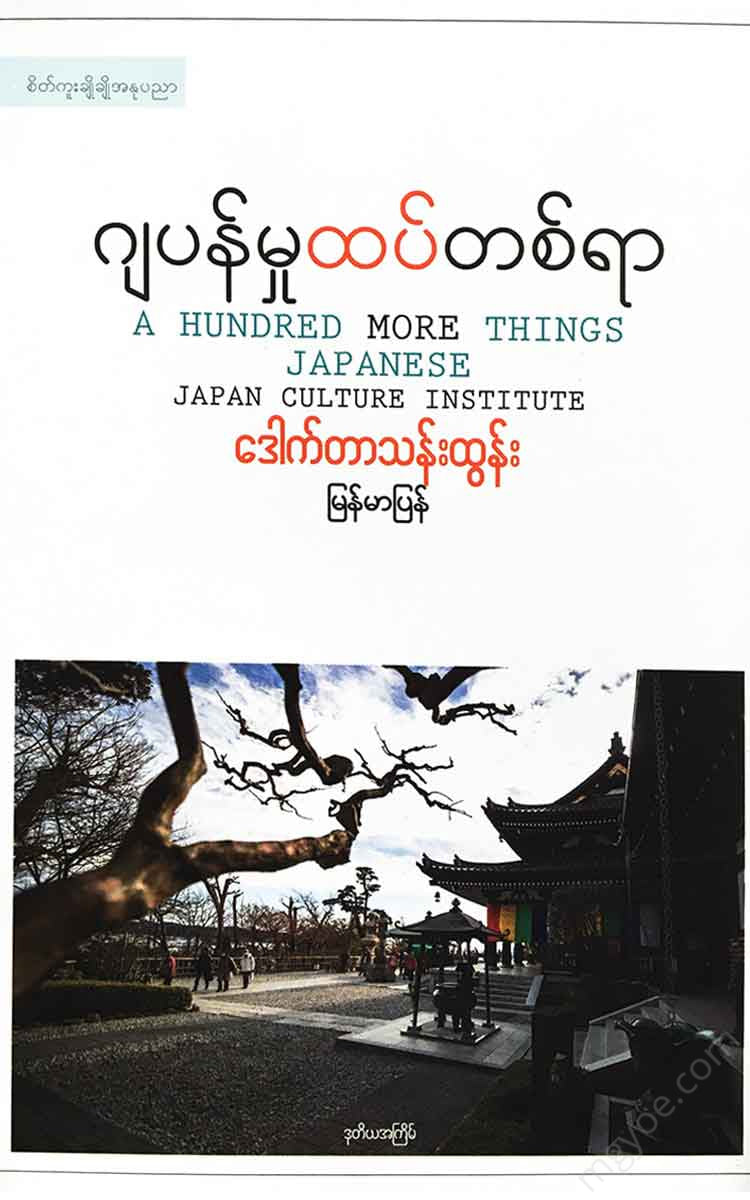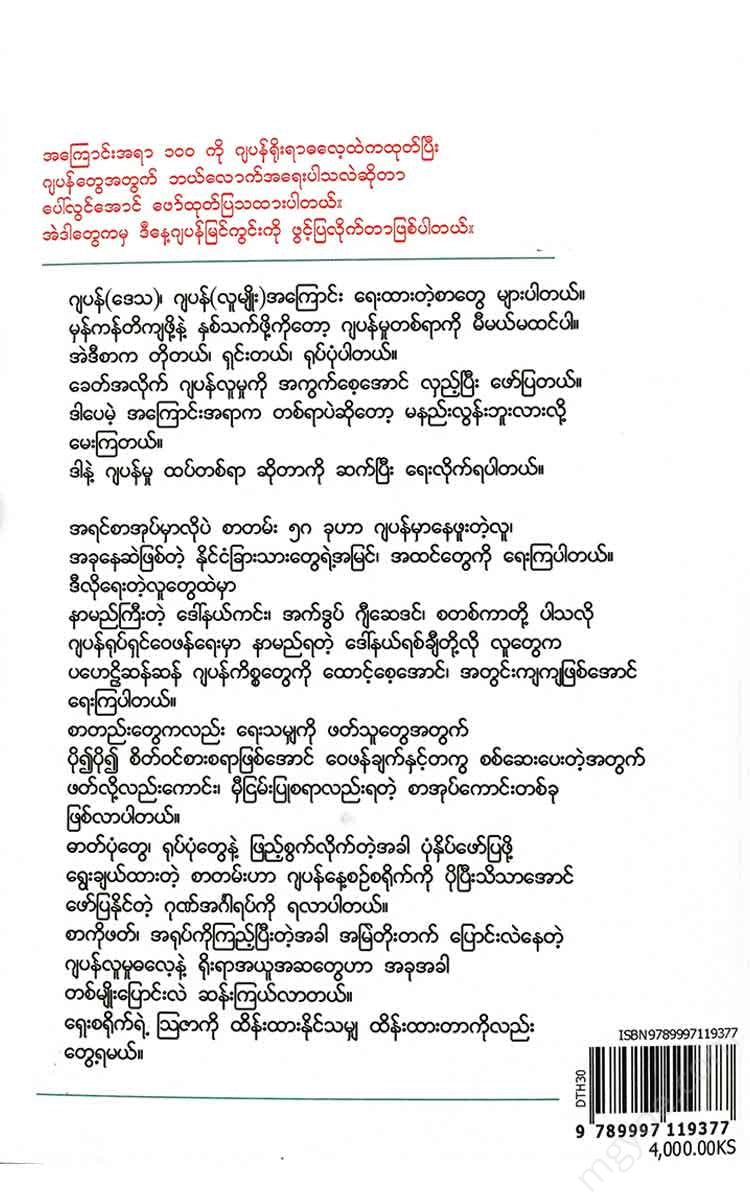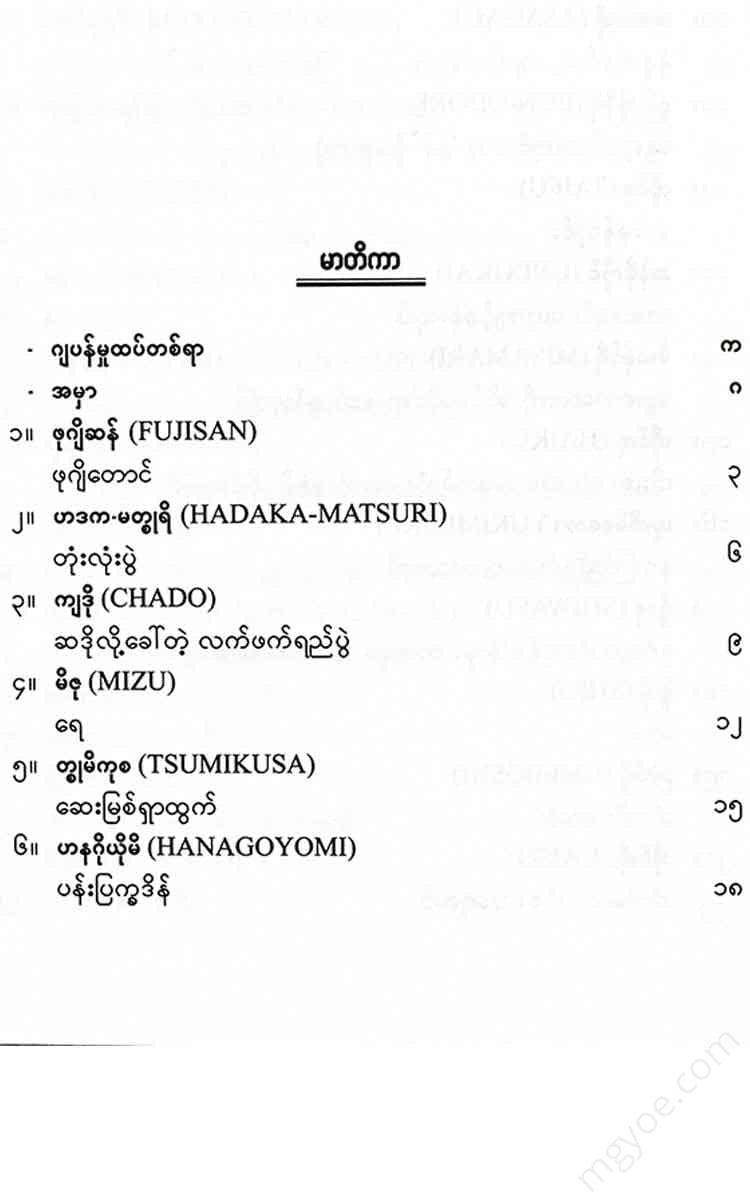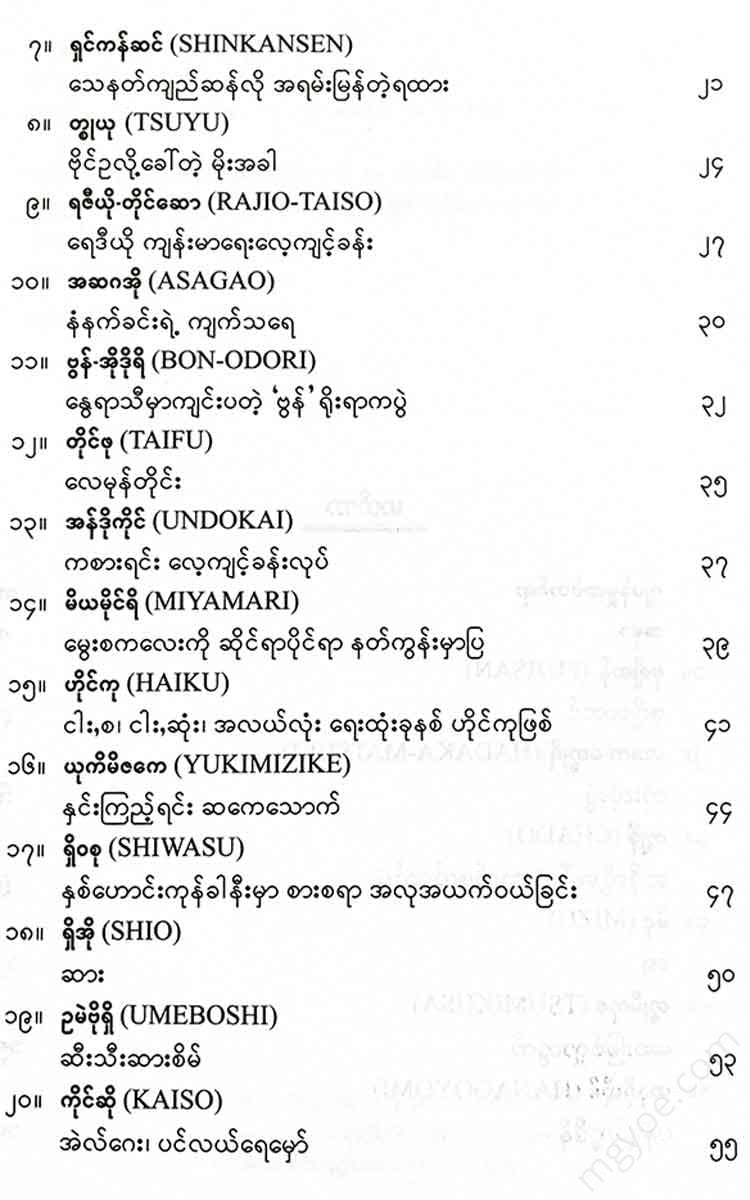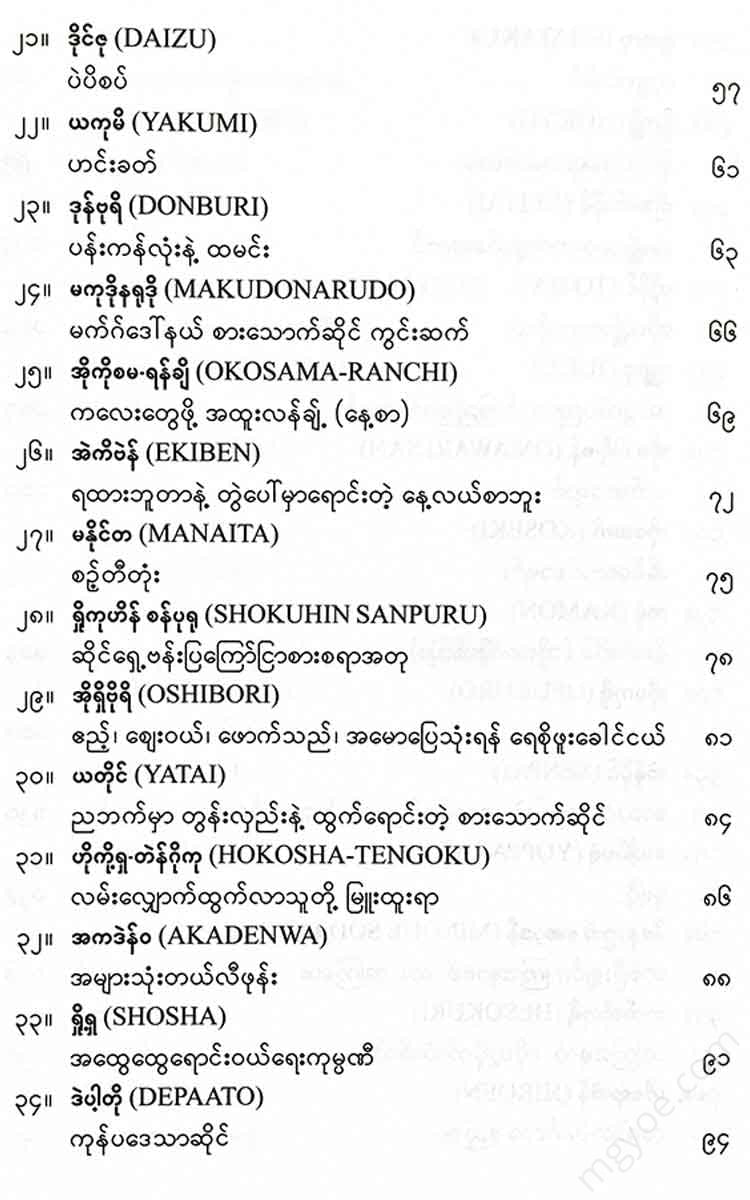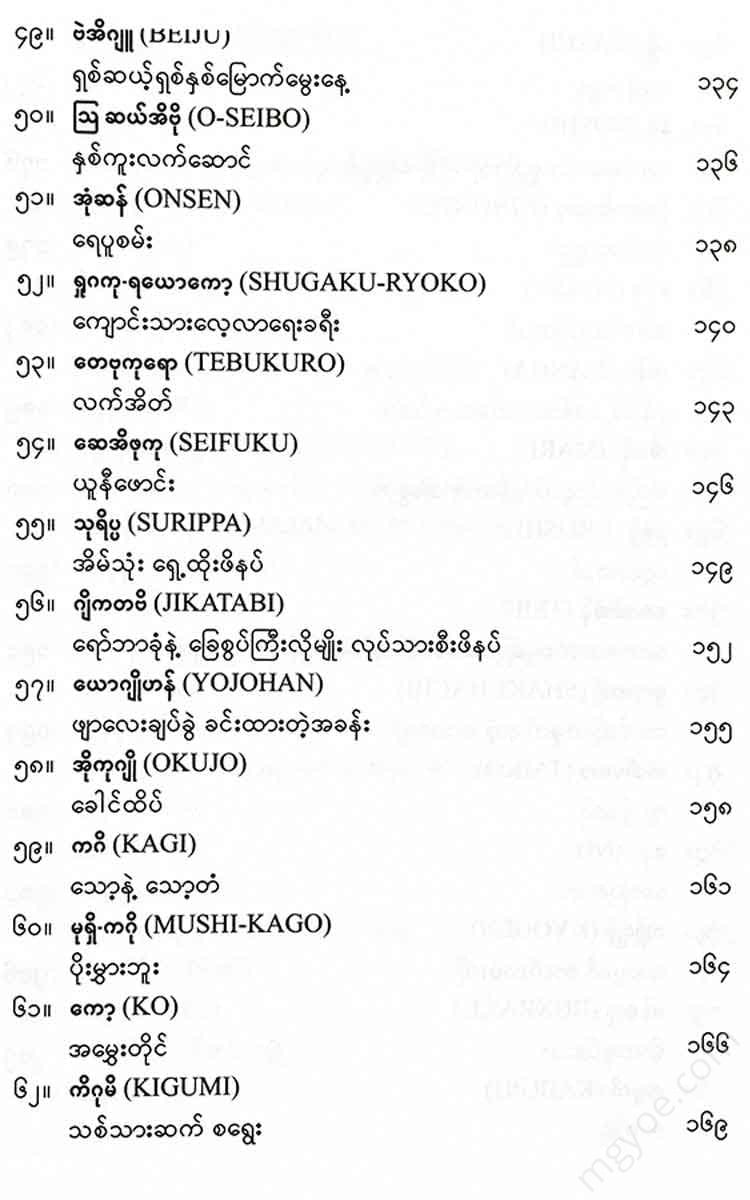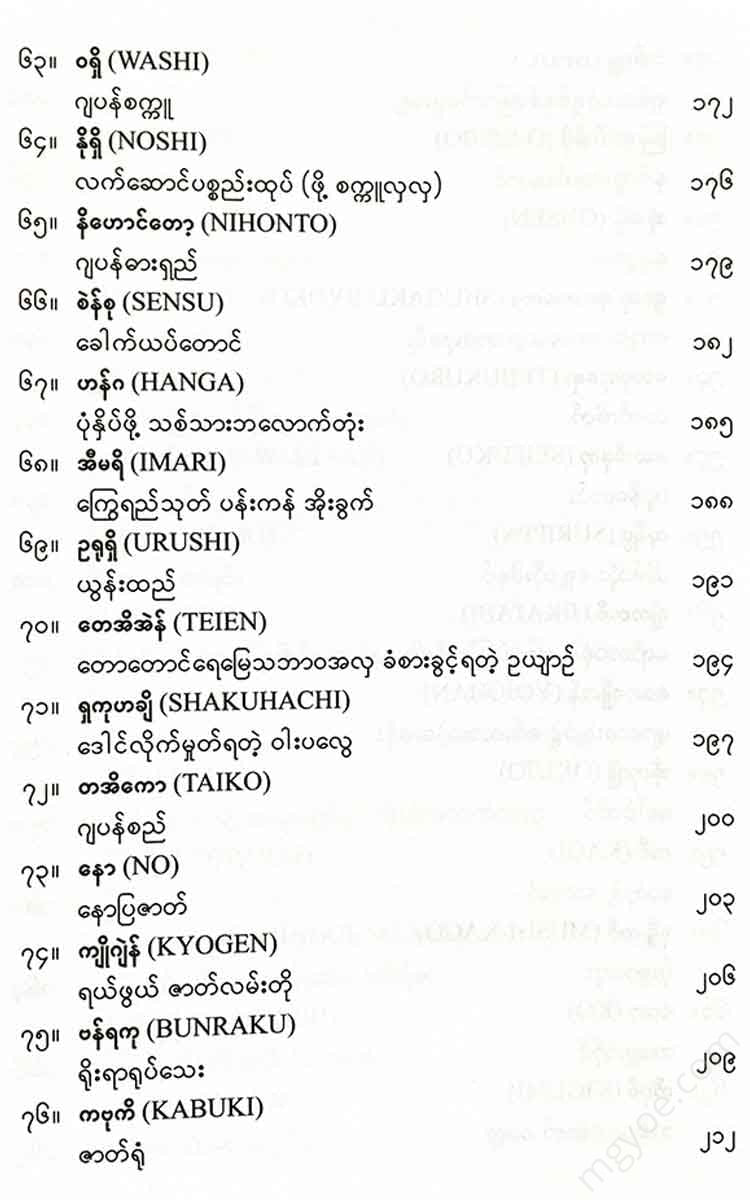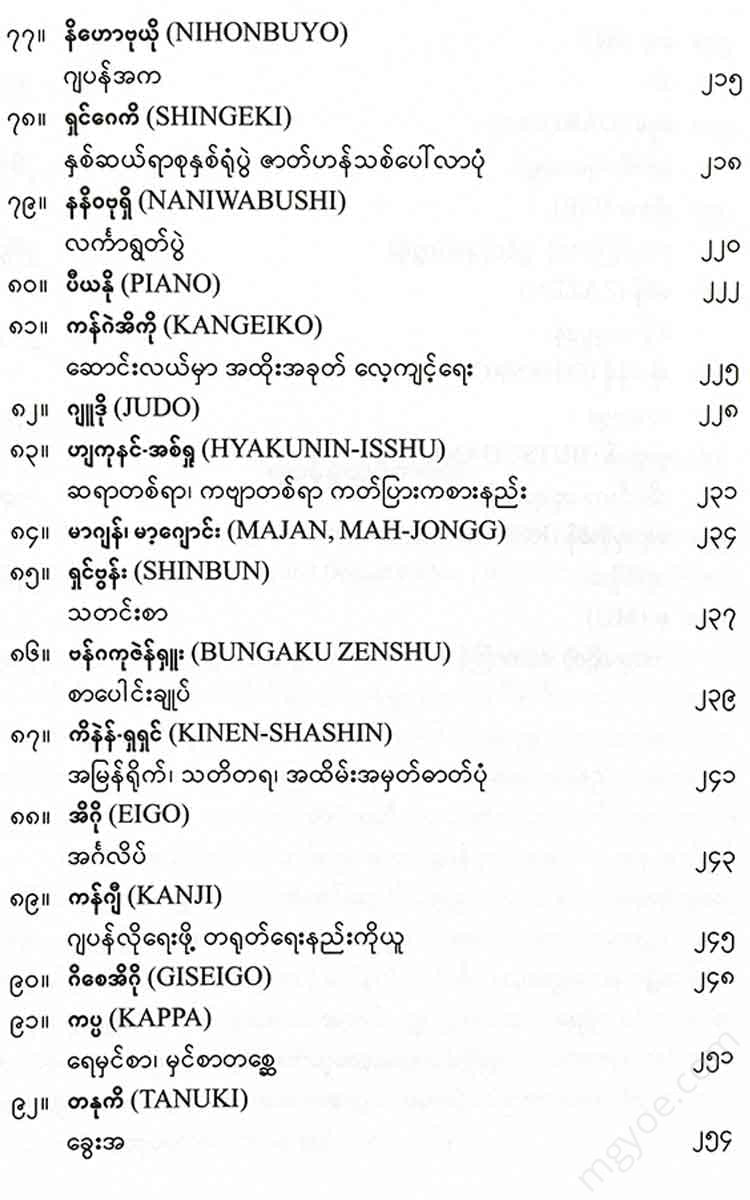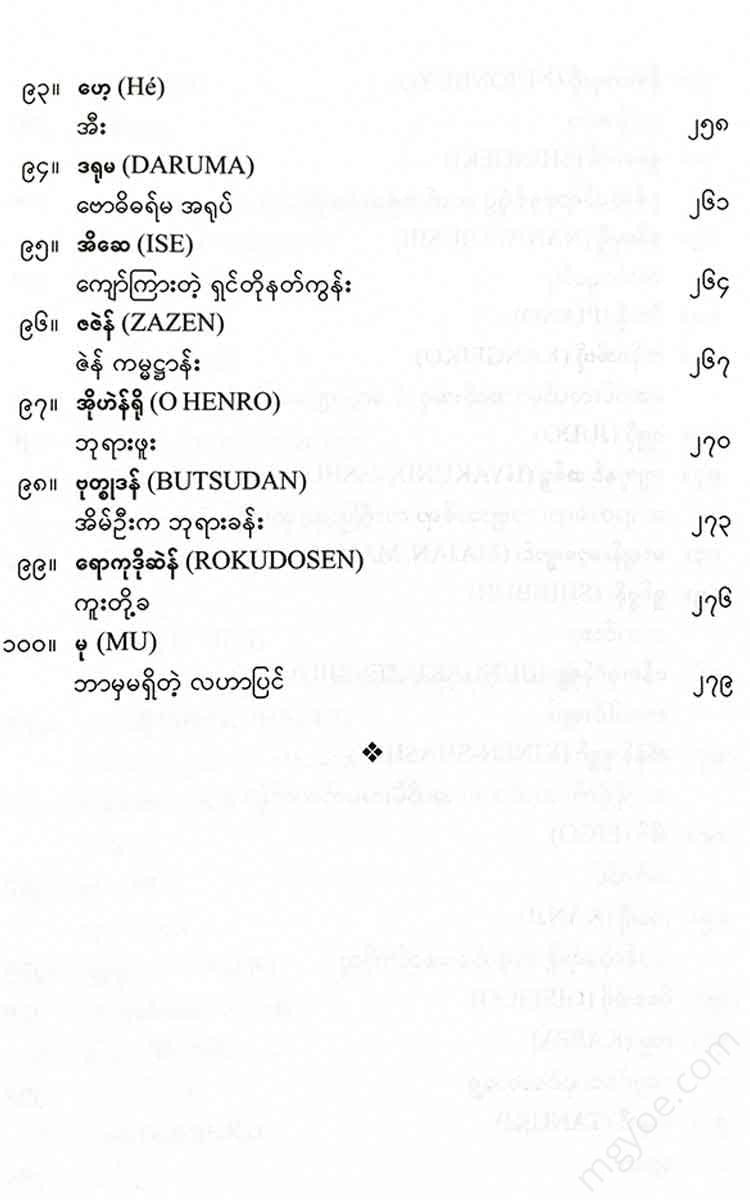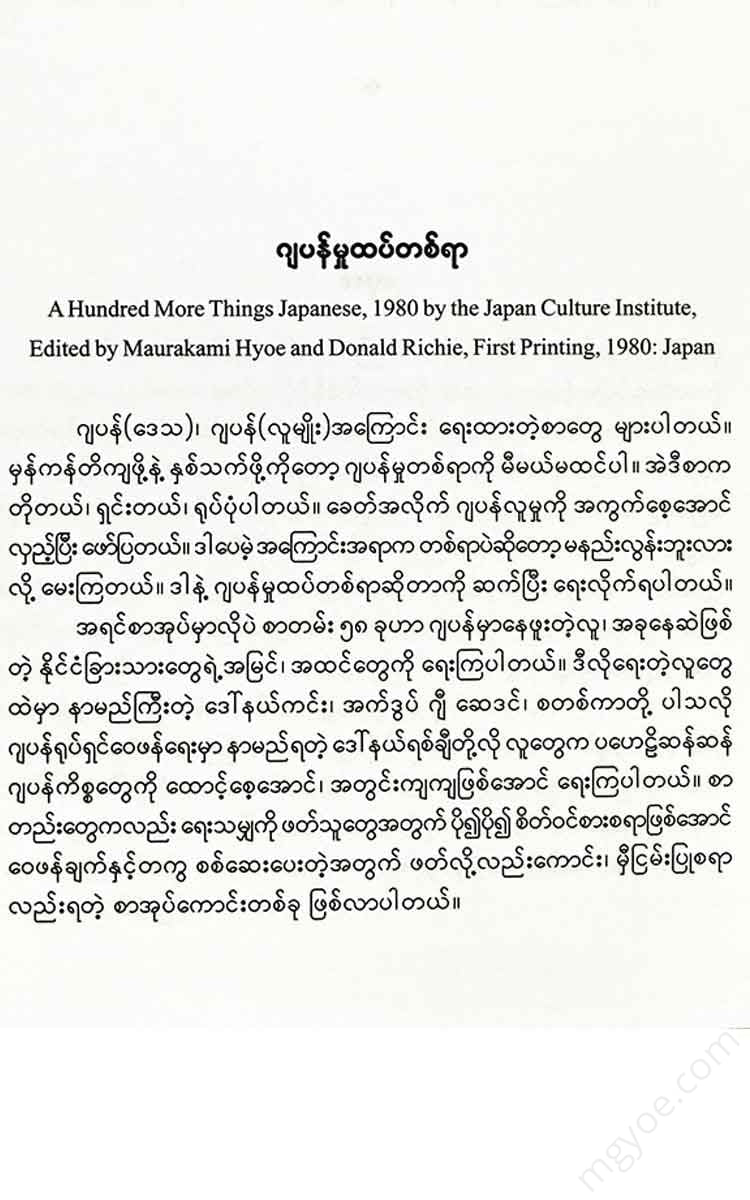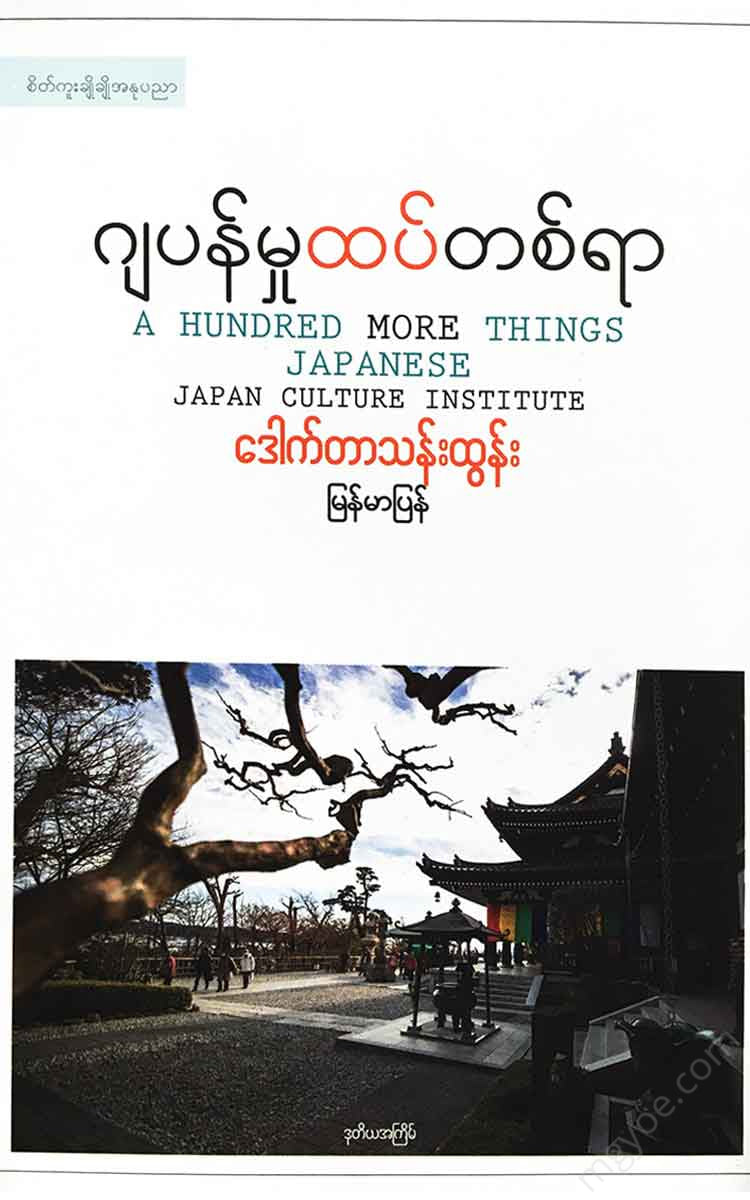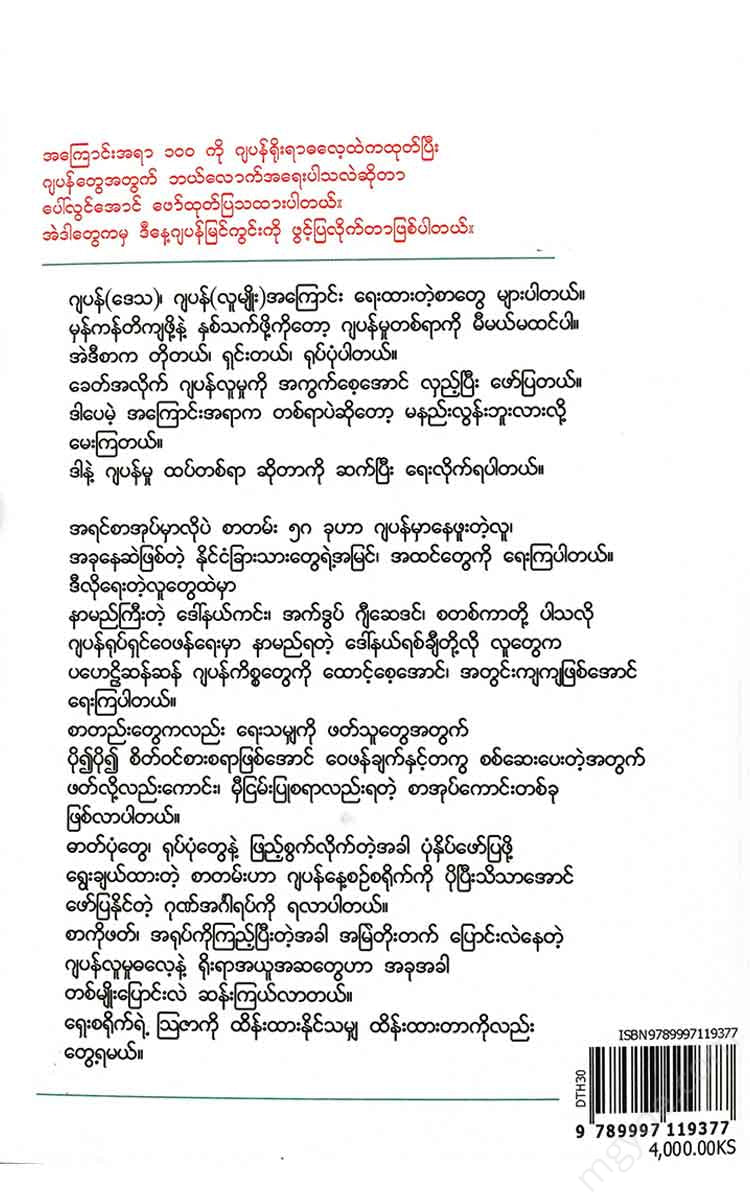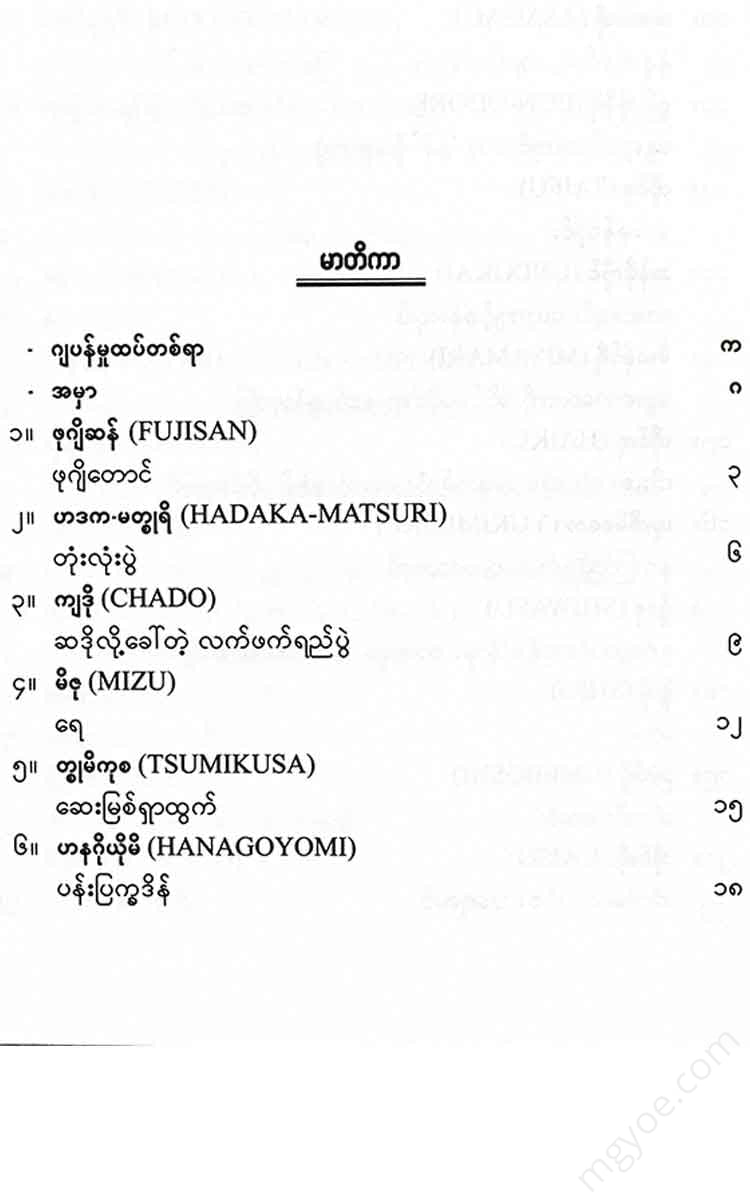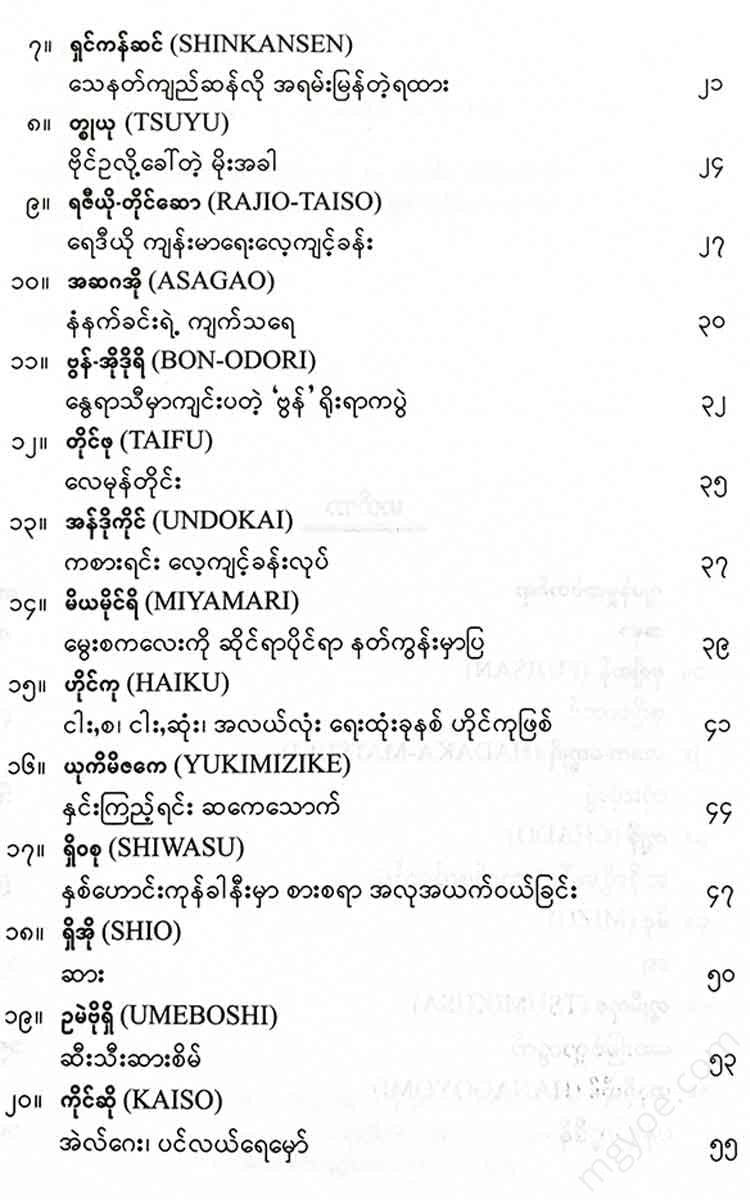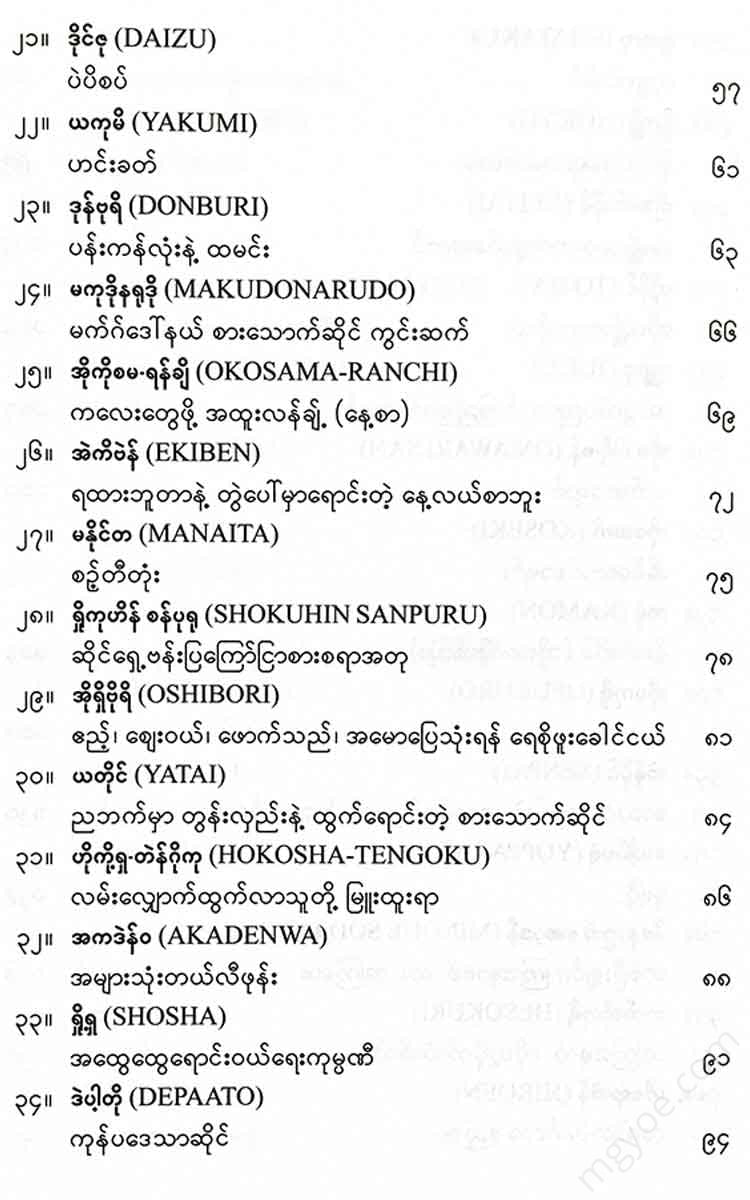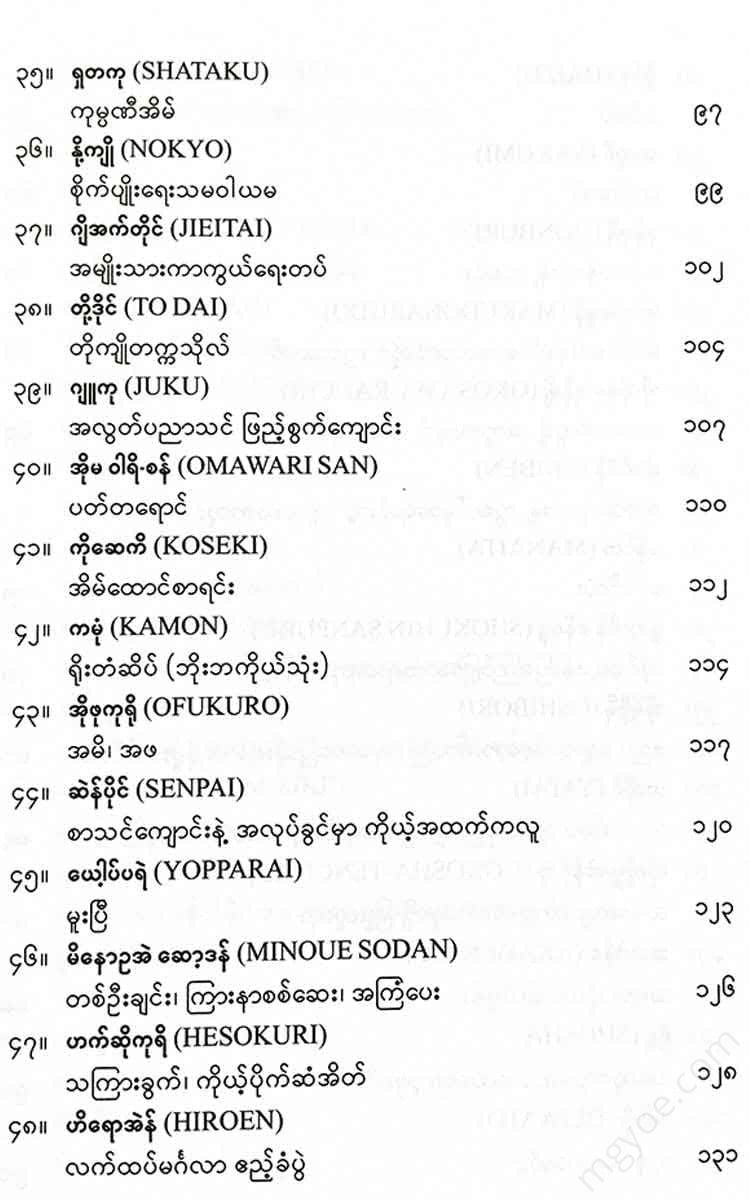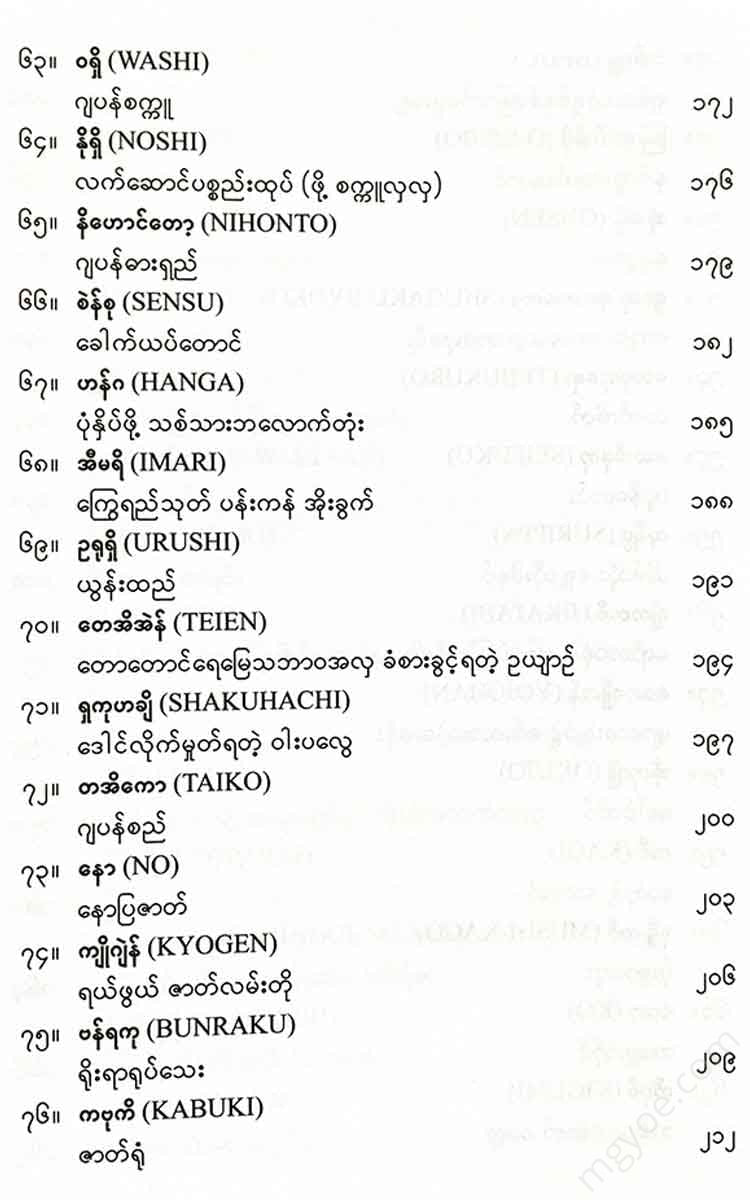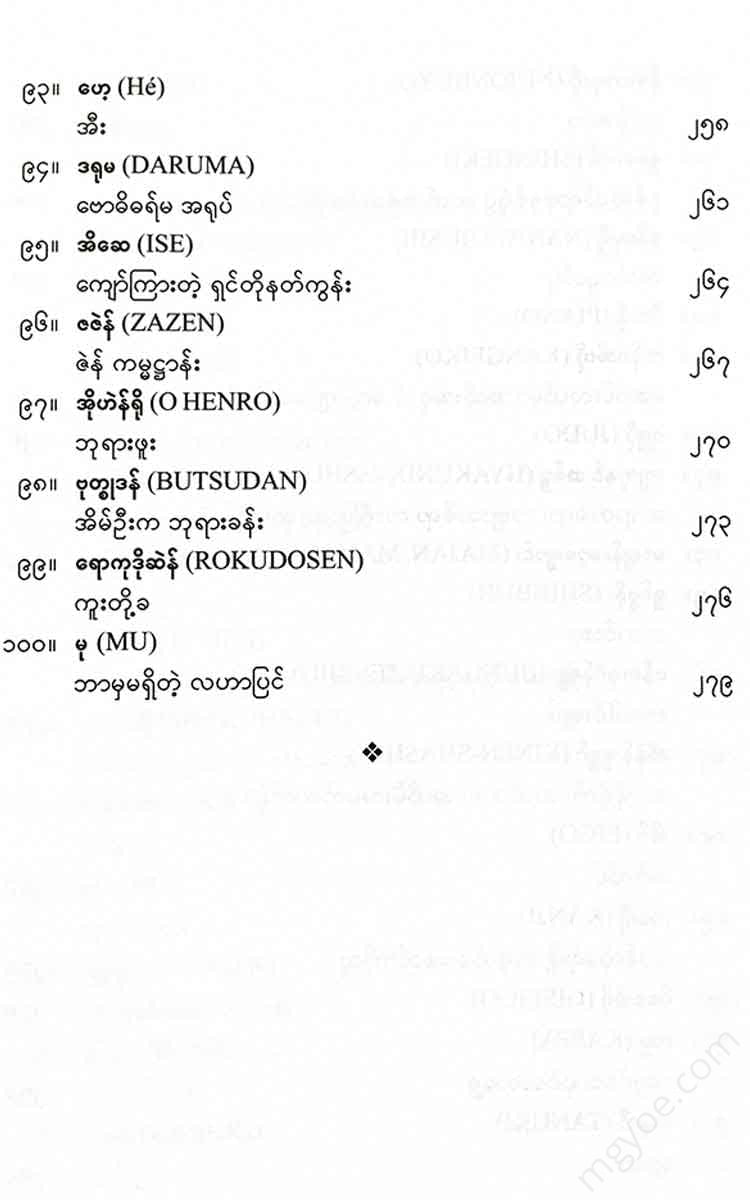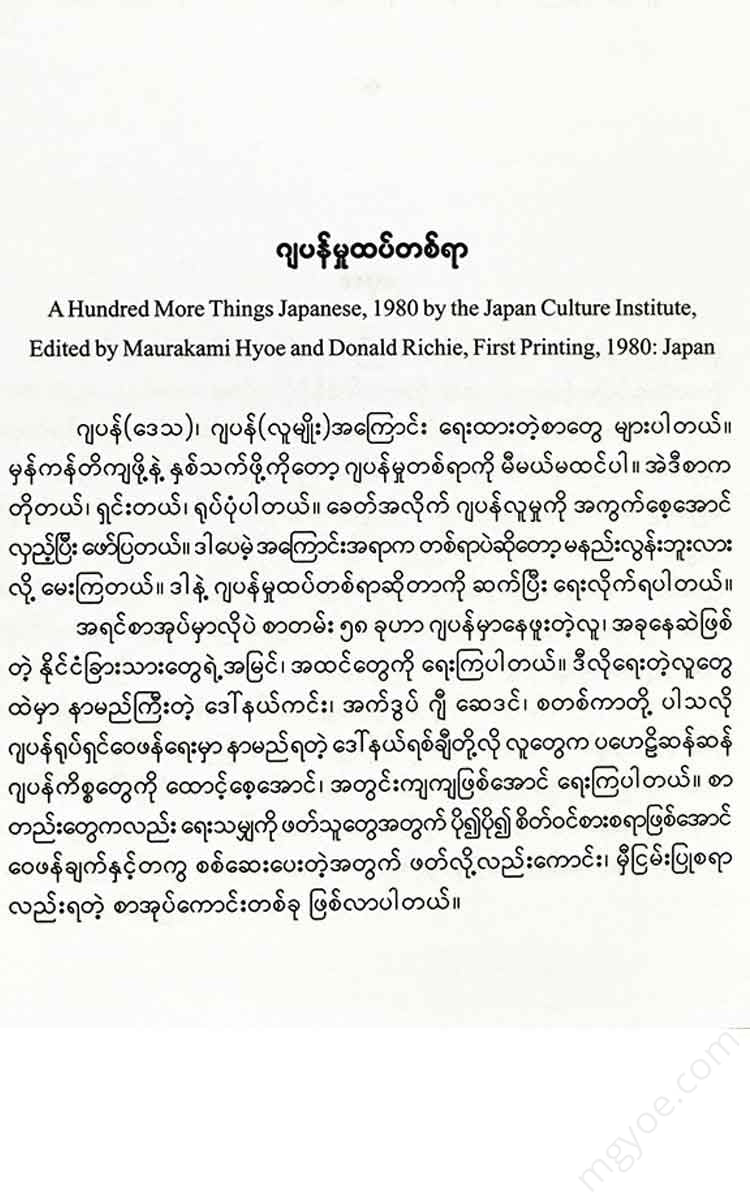စိတ်ကူးချိုချိုစာပေ
Dr. Than Tun - One Hundred Japanese Crimes
Dr. Than Tun - One Hundred Japanese Crimes
Couldn't load pickup availability
Order
I thought that when I finished writing a book about Japan, I couldn't finish it in 1975, and I thought that if I published a second volume, the audience would be happy to receive it.
The stories should include not only material but also ideas, and when they are presented together, people will see Japan in a new way. I think the questions of whether it is really like this or that will be less. You will see Fuji rice mixed with geisha dancing and cherry blossoms. Look at the table of contents. (If you think about it a little, you will understand.) When the topics are presented together, you will see that the Buddha festival and the spring are inseparable.
The way the topics are arranged in this book is different from each other, but they are all connected and related. The result is that when you do this, you will see that the old becomes new. Foreigners will also see their own “traditions” in a new light.
As in the previous book, I asked foreigners to write about Japan. I wanted to see it from a new perspective. When I asked foreigners to look at how we do things and tell me what they think, I think they would say that these people are still stuck in the old ways of thinking and thinking. But it doesn't have to be this way or that way. It's clear that it's the same with the foreign reader.
In the first part, I mentioned that when you look at a country that is constantly developing, it seems like it is made of red, yellow, and blue glass, shiny and new, and it seems like it is in reality. However, there are many things that are not considered in the culture of a nation that is dynamic and changing step by step. When choosing whether to include or exclude some new points of view (new perspective), it is also inevitable to be dynamic and mixed.
This is not the case with this book, as it is a compilation of all books. The editors of the Japanese Cultural Studies Library admit that they only dared to take the risk and publish a book like this because of the support of the public. I respect the support of the public.
We would like to thank “Klitankahu” for the images, and the Ministry of Communications, Defense Organizations, Metropolitan Police, National Theater, Shogakukan, Japan Tourism Office, Mainichi Newspaper, Sanka Ishinbun, TV Asahi, Southtown Buddhist Sect, Frennel Gallery, Mengei Theater, and the Medicine Bottle Store for the photographs.
Japanese Culture Studies Library
December 1979, Tokyo
( 1 ) Fujisan ,
Mount Fuji .
( San here means "mountain")
People often ask where they should go to learn the most about the Japanese. I say, “Climb Mount Fuji with them.” I have climbed it at least ten times. There is a Japanese proverb that says that a person who climbs it more than once is a fool. But I have to answer them with the words of William Blake, “A fool who is repeatedly fooled becomes wise.” Fuji tells us a lot about Japan.
As long as I live
This mountain
I will continue to praise.
The eighth-century poet Yamabe no Akahito mentioned above is still right. It's also true that they are selling this name. A large bank is also called this name, an ice cream machine is also called this name, a small machine that makes a piece of equipment is also called this name, a playground is also called this name, and despite all this destruction, this name has not diminished.
The peak is 3,776 meters (2,346.8 miles) high, not counting the radar antenna at the top. The mountain has been there since the first Japanese settlers arrived on Kyushu. It has been quietly smoking ever since. The name is thought to come from the Ainu language, which means "about to explode." Pre-Japanese people must have seen it erupt. About 20,000 years ago, the mountain erupted before their eyes, spewing out a huge plume of lava and fire within a week. The west wind blew the plume and fire to one side, causing the mountain to tilt toward the sea. The Japanese who first arrived on the island called their goddess Konohanasakuyahime (Konohanasakuyahime) Road 78: scossacz caTolosi osos She is related to the SunGoddess and is also related to the Japanese Emperor. (If you don't believe me, go up the mountain.) You can see the sunrise in the morning. Just hearing the name Fu makes you feel strong and stable. It's like all the Japanese things about beauty are wrapped up in one place.
And it is the basic motivation that two million Japanese (and a few foreigners) climb this mountain every year, even if they don’t reach the top. At the last 500 feet, all that remains is a dry, burnt-out ash. Not a single tree or blade of grass to be seen. The “fish” camp is also a hut built of stone. You can stretch out on a grass mat for a while, drink tea, and eat noodles. The higher you go, the more expensive everything you drink. Day and night, people line up to climb and descend, pay homage to the mountain’s guardian spirit, dance, and sing traditional songs. But the most common sound is the cheering of “ganbatte” (a kind of cheering).
The amazing thing is that people who come here in the summer always climb to the top. There are also shops selling souvenirs. There is even a post office. The footprints of millions of people who have climbed down, the images of the giants coming and going, the images of the enthusiasm and joy of the people who come, are still alive like Hiroshige's timeless woodblock prints. But the true meaning of climbing Mount Fuji is only known after climbing it. Ganba.
Murray Sayle
